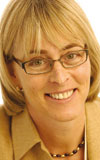
After more than 40 years of operation, DTVE is closing its doors and our website will no longer be updated daily. Thank you for all of your support.
Taking the high road
 “For those of us who wondered if clearer, more detailed TV pictures would be enough to convince more than the geeks among us to upgrade their TV kit, the answer seems to be ‘yes’.”
“For those of us who wondered if clearer, more detailed TV pictures would be enough to convince more than the geeks among us to upgrade their TV kit, the answer seems to be ‘yes’.”
The old mantra ‘content is king’ has taken a bit of a beating in the age of the internet. The quality of the content on the web has often underwhelmed, but in today’s always-on culture the capability of the technology platforms – Facebook, Amazon or Skype – to offer faster, cheaper and more connected ways to do all kinds of things from shopping to swapping photos has captured people’s imaginations.
In much the same way, for those of us who wondered if clearer, more detailed TV pictures would be enough to convince more than the geeks among us to upgrade their TV kit, the answer seems to be ‘yes’. High-definition TV used to be lauded as the way to watch nature documentaries and sport, but more and more types of programming are now being shot in HD, and the appetite for it looks to be on a roll across the US and Europe, where pay-TV operators see HD as a way to differentiate their services. But it is not just the big established markets that are embracing it. Increasingly HD is being seen as one of the next big growth engines for pay-TV in South America and even in India.
In the case of one established player, BSkyB, the take up of HD has been stunning. The UK’s biggest pay-TV operator has very cleverly positioned its HD boxes as a DVR upgrade, implementing a radical cut in the HD DVR price from £199 (?229) to £49. Sky has also trumped other UK distribution platforms with the sheer number of HD channels on offer; the current Sky HD line-up comprises 34 channels, including the new ESPN sports channel added in August. As to its competitors, free-to-air digital platform Freeview suffers from spectrum constraints and HD on Freesat will cost programmers money with no way to recoup the costs from viewers. Cable operator Virgin Media will only be able to match Sky’s HD offer if it gets a positive result from Ofcom’s ongoing pay-TV review.
Sky’s total HD base has grown 69% from 799,000 subscribers in January to 1,313,000 by the end of June. Enders Analysis expects that Sky could add 500,000 more HD box subscribers by the end of 2009 and that HD could represent 25% of all Sky subcribers by the end of 2010. Likely taking a leaf from its sister company in the UK, the newly-named Sky Deutschland has decided to order only HD set tops from supplier Pace. As usual, News Corp, which now controls 40% of Sky Germany, is betting on live sport and a better pay-TV experience. HD is a big part of that bet.
But Sky Deutschland is not alone. According to Pace, pay-TV operators the world over are embracing HD as the way to differentiate their systems quickly. “What we are seeing globally is that operators are seriously considering not bothering with SD any more,” says Neil Gaydon, CEO of Pace.
In the first half of 2009 Pace saw 57% of its revenues from HD sales and expects that to rise so that for the year some 80% of revenues will be from HD-enabled products. Of Pace’s 90 products, some 60% of them are now HD-capable and that proportion is set to rise.
The falling cost of HD boxes has also helped push the technology to the forefront. DirecTV recently reported that its first HD boxes, ordered two and half years ago, cost US$500 (?575) each. That per-box price is now less than US$200.
As governments around the world turn off analogue TV services, HD is going to be the choice a lot of people make as they upgrade to digital. The other big consideration is consumer appetite for HD-ready flat panel TVs for aesthetic reasons.
Clearly standard-definition TV is not yet dead: US satellite pay-TV provider DirecTV still sells a lot of standard-definition boxes, but bear in mind that DirecTV homes have an average of 2.9 set-tops. It is likely that subscribers’ main rooms will be HD-equipped today, with standard-definition boxes elsewhere. Cable operator Comcast in the US also buys a lot of basic, stripped down set-tops that are standard-definition only.
But the economics seem pretty clear. An MPEG-4-based standard-definition DVR just won’t make financial sense for much longer. And with consumers looking to upgrade to digital there is a land-grab opportunity for pay-TV providers. HD is one of the ways to make their service look more attractive.
The prospects for high-definition TV are compelling. HD boxes can also accommodate the type of 3D pictures (with special glasses) that Sky in the UK has said will be on offer from 2010. But perhaps more importantly, many HD boxes also have an Ethernet connection, allowing delivery of broadband services to the TV. In France Canal Plus has already started offering an HD set-top with on-demand content delivered via the Ethernet connection. For the user, the on-screen transition from broadband-delivered content to broadcast-delivered content is pretty seamless. The box is also cool: it’s black and white with an Apple iPod look and feel.
So is HDTV the next big thing? The picture seems only to be getting clearer.
Kate Bulkley is a broadcaster and writer specialising in media and telecommunications. [email protected].
